|
Each day at Hobson School, after a busy day playing outside, the children come inside, get their bags, and meet us on the tarp. The children then get to work taking off their mittens, hat, jackets, scarves, boots, and rain or snow pants. They place their outerwear in their bags, put on their inside shoes, hang up their bags, and, finally, wash their hands so they can begin to play inside. WOW, what a lot of work they accomplish! Our job as teachers (and parents) is to watch and coach children as they undress themselves, not to do it for them. And the reason for this is because there is a tremendous amount of learning that occurs when children learn to dress/undress themselves and take care of their belongings. We are sharing an excerpt from an article we recently came across that explains just how important it is for children to develop and have this self-help skill. "As children learn to dress themselves, they are strengthening physical development, improving coordination and memory, and learning spatial and body awareness. Learning to manipulate one’s own gear also serves the very practical purpose of freeing up parents’ and teachers’ time, while enabling children to fix any problems that may occur when playing outdoors, such as dislodging pebbles and sand from their boots or taking off mittens."
Read more: "How Learning to Put on Rain Boots Leads to Academic Success" by Catherine Koons Hubbard
Hirsh-Pasek and Golinkoff discuss the “need to change the whole definition of what success in school, and out of school, means”. They share how the “6 C’s” - collaboration, communication, content, critical thinking, creative innovation and confidence - are essential for success in the 21st century, and what parents can do to help children acquire these abilities. The central theme to the INTERVIEW focuses on “reinforcing the idea of learning as a social, relationship-oriented process. It’s not just a grid for sorting and measuring our kids; it’s about how we are relating to our kids.” ADDITIONAL RESOURCES... “Listen, Talk, Answer - Support Your Child’s Learning” from the National Association for the Education of Young Children provides tips for “powerful interactions” that will support learning all the time and everywhere! As we all spend more time at home, there’s more to tidy up and take care of. As a parent it can become overwhelming and frustrating to feel like all of the household chores are yours and yours alone. It is important to remember that simple home living tasks and routines can serve as meaningful learning opportunities and confidence boosting experiences for children.
Teaching children how to help with chores takes time, patience, and flexibility - but the benefits for everyone are worth it. Parents gain extra help around the house, and children gain a sense of responsibility, confidence, and pride. In the article “Children and Chores” the American Academy of Adolescent and Child Psychiatry highlights... Research suggests there are benefits to including chores in a child's routine as early as age 3” and provides tips for introducing age-appropriate chores to your children. Cooking with Children Cooking together strengthens family bonds and bolsters children’s social, emotional, physical and intellectual skills. It is important to remember that cooking with children can be very simple and asking for children to help make regular meals is great because it is already a part of the day. Even something as basic as helping make scrambled eggs and toast, or grilled cheese and veggies can be super rewarding and meaningful for children. 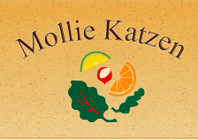 If you want to spice up your recipes these cookbooks from Mollie Katzen are great because they have fabulous illustrated recipes that children can follow. Cutting Tools: Your child can use most of the cooking materials you already have in the kitchen. Children will need help learning to use sharp tools like can openers and peelers. Butter knives are great for soft foods or spreading. A set of kid-friendly knives and a sturdy cutting board are investments worth making to help children participate in cutting and chopping. I recommend a set of nylon knives. Using the Stove: Using the stove or any heat source requires adult supervision. When we cook in the classroom we use electric skillets. Even at home these can be great for cooking with children because you can set them up anywhere, and there is no flame.
Cleaning Up:
Don’t forget, with a stool and a scrub brush your child can also help wash the dishes! Not only will they feel good about cleaning up, playing in the soapy water can be a relaxing sensory experience. Check out this Hobson-approved activity and try it out at home! The Wrapping Station In December we introduce the children to “wrapping” boxes. The teachers set up a station complete with wrapping or newsprint packing paper, scotch tape, scissors, markers, and empty boxes. The children are eager to explore the materials and the teachers model wrapping and gently share tips... “When I wrap, I fold the paper like this,” showing children how to do it themselves, while also being careful not to take-over the process. Once they get the hang of it, children work diligently and with great focus to wrap boxes of all sizes. It doesn’t matter if it is a Wheat Thins box, or an old jewelry box, any old box will do! Some children choose to put things inside the boxes, but most are satisfied with an empty box and they are filled with pride when they finish their wrapping. Provide the following materials...
As parents we all know that our homes can quickly become overwhelmed with toys, many of which children only play with for a short period of time! When choosing toys, remember... Toys with high play value can be used in many ways, allow children to be in charge, appeal to more than one age group, withstand the test of time, and can be used with other toys.  The organization TRUCE (Teachers Resisting Unhealthy Children’s Entertainment) provides a wealth of information about play and the toys and materials that best foster children’s play and learning. TRUCE Toy Guides give examples of quality toys you can purchase, information about how to choose toys of value, and examples on toys to avoid and why. I recommend checking out the Play Boxes article for great ideas on putting together materials that will engage your child in hours of play. Resources to help you achieve heart-centered holidays during this tender year. By Hobson School Director Beth Wilson Big Holiday Feelings Holidays, birthdays, and other special celebrations have been unique this year, but the fact that parents and children bring big emotions to these special times of the year remains the same. As winter holidays approach, your children may have questions or worries about what to expect or what will be different this year. The article “10 Phrases to Help Kids Cope with Holiday Disappointment This Year” aims to help you build resilience in your child when discussing the changes to holidays and special celebrations. While reading I was reminded that the simple exchanges of care, love and connection are often the greatest gifts we can give to children. Pandemic Parenting Through the Holidays  If you want to find even more support, Pandemic Parenting - an organization run by two psychologists - and aimed at supporting parents with trustworthy information about parent, child and family development during this time - also posted a webinar... “Reimagining the Holidays: Making Memories During a Pandemic”. The discussion with Dr. Robyn Fivush explores how children form memories, the importance of family storytelling, the making of traditions and taking the pressure off of “perfect holidays.” Use the time stamps for “Key Moments” search for answers to the questions you are interested in. During the month of November, we talk a lot about giving and being thankful. Research shows that the benefits of practicing generosity and gratitude include – increased health and well-being, greater sense of optimism, life satisfaction, and social connection – to name a few. Because these practices improve our lives, it is no wonder that we want to help children understand the importance of giving and being thankful. The most powerful way to teach children to give and be grateful is through modeling generosity and gratitude in our daily life. If we want children to give to others, we must give. If we want children to be grateful, we must express gratitude. One of the major benefits of belonging to a cooperative school is that children directly experience giving and gratitude as parents, children and teachers work together Here’s one way we practice gratitude at Hobson…. While you hear many “Thank Yous’ every day at Hobson, our community created a “We are Thankful For….” wreath to invite even more conversation about gratitude. The wreath is in the foyer of our school, so families pass it as they arrive and depart each day. A small sign invites people to pick a clothespin and write what they are thankful for with a marker. It is wonderful watch the wreath fill with gratitudes both big and small. When you read the contributions, you are reminded of how much we have to be thankful for. This simple invitation has created moments of connection between families beyond “Hello” and “Goodbye”, as they stop at the door to talk about what they are grateful for. Today, one parent explained to a child that… Thankfulness “is something that makes your heart so full and happy”. -Hobson Parent If you are looking for more ideas on how to foster gratitude, check out the article Seven Ways to Foster Gratitude in Kids from University of California Berkeley Greater Good Science Center’s “Expanding Gratitude” project. This is just one of many great articles to check out on this website. Enjoy! It is through relationships that we build our sense of belonging in the world. So much of our human relationships are about giving, receiving, repaying – that is how we are connected to one another.” |
Hobson School
|







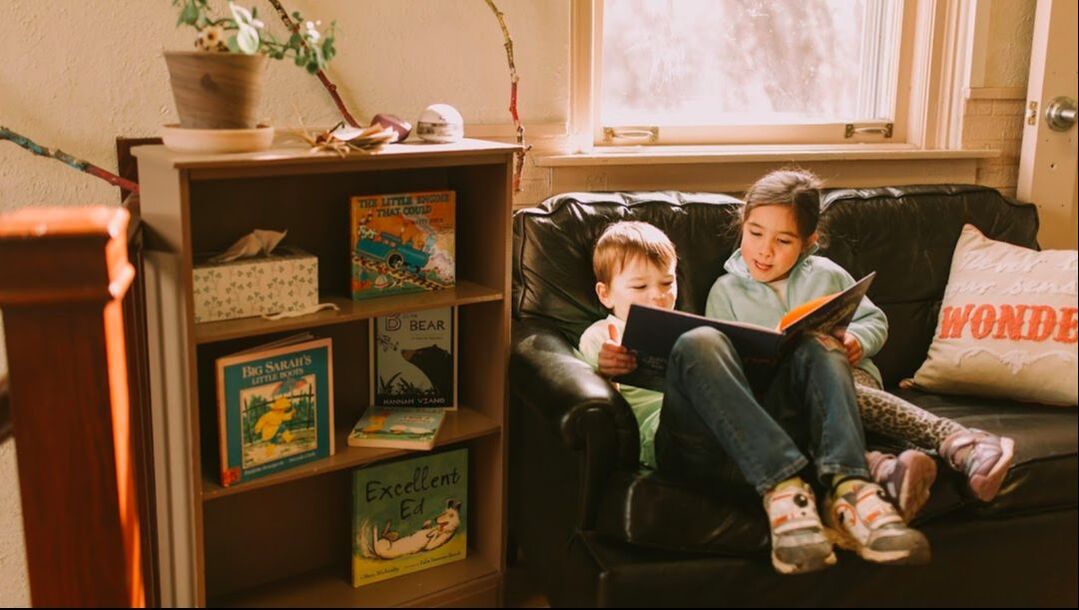
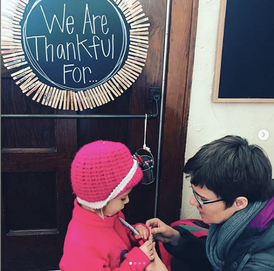
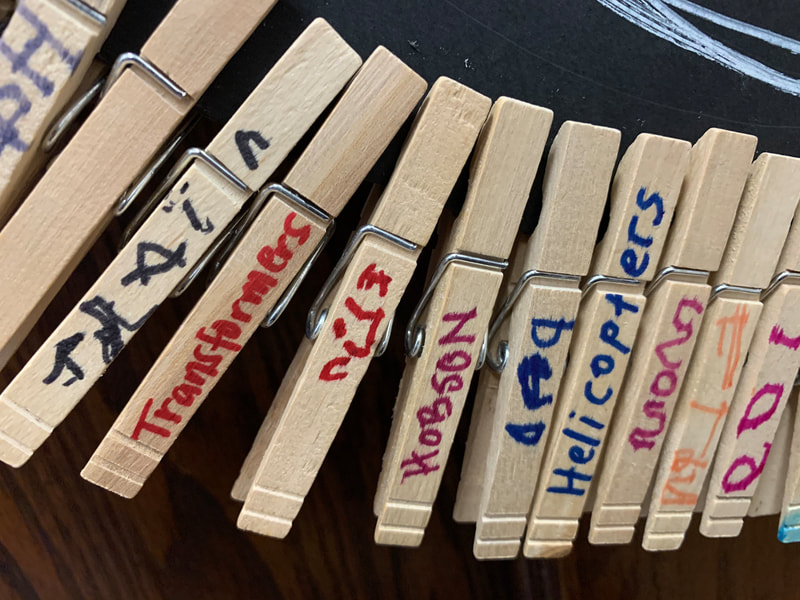

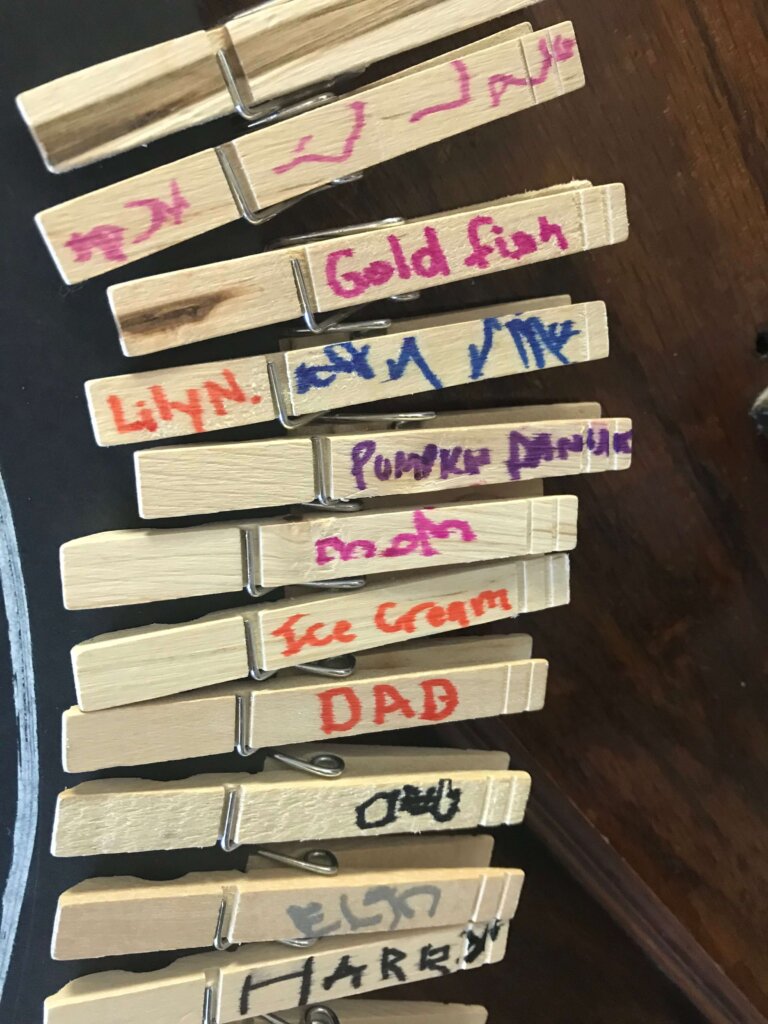
 RSS Feed
RSS Feed